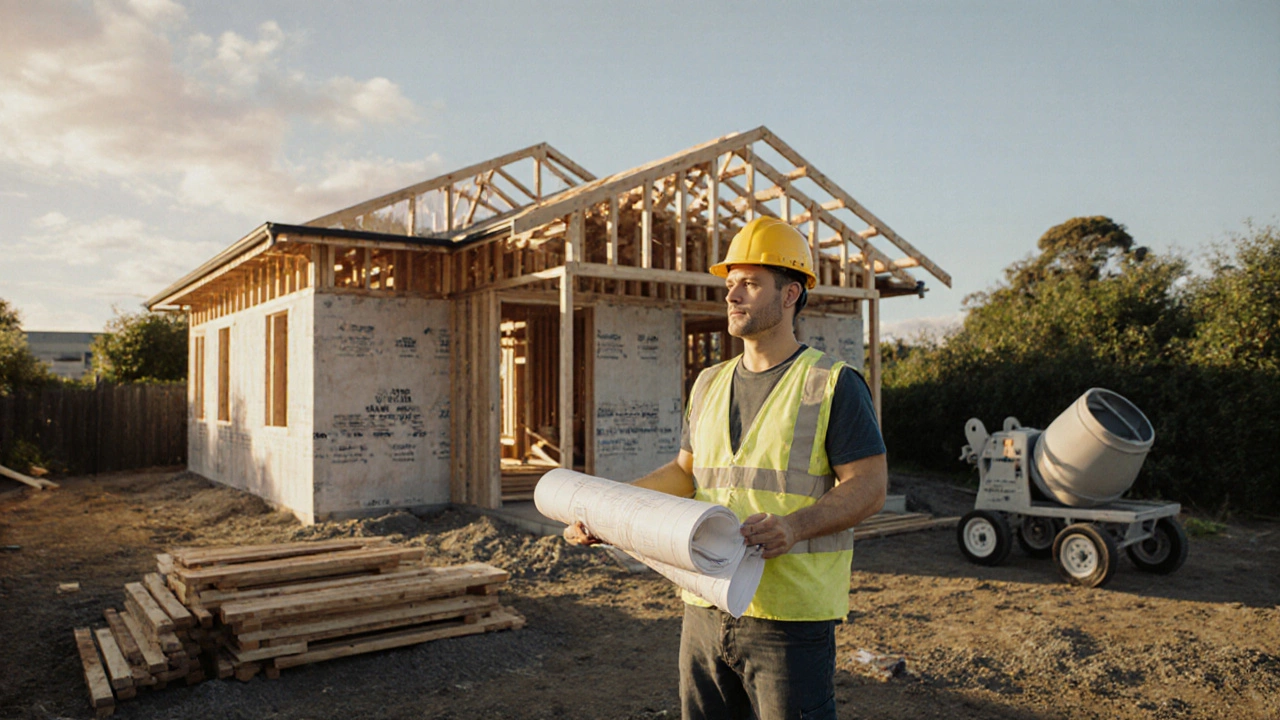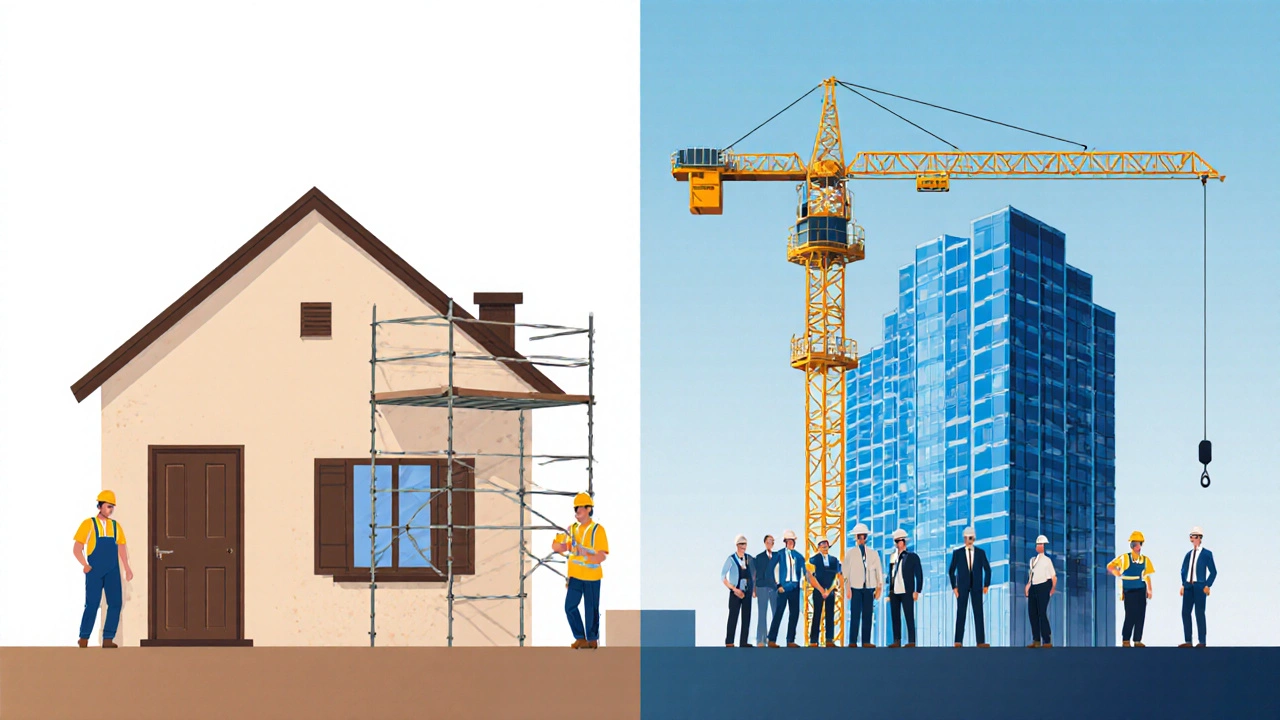Understanding Lower Tier Contractors in Building Projects
 Oct, 26 2025
Oct, 26 2025
Contractor Tier Checker
Project Assessment Tool
Determine if your building project can be handled by a lower tier contractor (Tier 1/2) under New Zealand's Building Act 2004
Lower tier contractor is a classification used in the construction industry for firms that operate under a restricted licensing level, typically handling smaller or less complex work than higher‑tier contractors. If you’re planning a renovation, an extension, or even a new build, you’ll hear this term tossed around. Knowing what sets a lower tier contractor apart helps you choose the right partner, avoid costly surprises, and stay on the right side of New Zealand’s building regulations.
What Exactly Is a Lower Tier Contractor?
In New Zealand the Building Act 2004 divides contractors into three licensing tiers: Tier 1 (lowest), Tier 2, and Tier 3 (the highest). A lower tier contractor usually falls into Tier 1 or, in some cases, Tier 2. Their licence limits the size of the project and the type of work they can legally undertake. For example, a Tier 1 licence may allow a contractor to build a single‑storey dwelling under 150 m², but not a multi‑storey apartment block.
How Do Lower Tier Contractors Differ From Higher Tier Contractors?
| Aspect | Lower Tier (Tier 1/2) | Higher Tier (Tier 3) |
|---|---|---|
| Maximum Project Size | Up to 150 m² residential, limited commercial | Unlimited - multi‑storey, large commercial |
| Scope of Work | Standard builds, extensions, renovations | Complex structures, heritage projects, high‑rise |
| Insurance Requirements | Home‑building warranty insurance (HBWI) for qualifying work | Full builder’s warranty plus additional public liability |
| Regulatory Oversight | Inspections by local council, limited consent processes | More rigorous consent, design reviews, code compliance checks |
| Typical Cost | Lower hourly rates, fewer overheads | Higher rates, larger organisational overhead |
These differences matter because they affect everything from budgeting to how long a project can take. A lower tier contractor can be a perfect fit for a modest kitchen remodel, but you’d need a higher tier partner for a new office complex.
Why Do Lower Tier Contractors Exist?
Think of the tier system as a safety net. By restricting the scale of work a contractor can do, the Building Act ensures that firms have the right experience, resources, and insurance before tackling larger, riskier projects. It also helps homeowners and developers match the right skill set to the job, keeping the construction market competitive and transparent.
Typical Projects Handled by Lower Tier Contractors
- Single‑storey house builds under 150 m²
- Home extensions (e.g., adding a bedroom or a deck)
- Renovations such as kitchen, bathroom, or loft conversions
- Small commercial fit‑outs like a boutique shop or café
- Maintenance and minor repair work on existing structures
If your project falls into one of these categories, a lower tier contractor is likely qualified, provided they hold the appropriate licence.

Licensing and Registration: What to Check
In New Zealand, every contractor must be registered with the Building Consent Authority (BCA). Here’s what you should verify before signing a contract:
- Licence tier - confirm the contractor’s licence number and tier on the MBIE register (do not hyperlink in final output, just mention the site).
- Home‑building warranty insurance - required for most residential work over $3,000; ask for the policy number.
- Public liability insurance - at least $20 million coverage for any tier.
- Workplace health & safety compliance - check that they have a current WHS plan.
- References - ask for at least three recent clients with similar‑scale projects.
Skipping any of these checks can expose you to legal hassles, unfinished work, or costly fixes later.
Cost Considerations: When Is a Lower Tier Contractor Cheaper?
Because lower tier firms have fewer overheads, their hourly rates can be 10‑20 % lower than Tier 3 outfits. However, the total cost depends on project scope, site conditions, and the need for specialist subcontractors. A common mistake is assuming a lower price means overall savings - sometimes a Tier 3 contractor can complete a job faster, reducing labor days and financing charges.
Use this quick rule of thumb: if the project is under the tier‑specific size limit and doesn’t involve specialty engineering, a lower tier contractor will likely give you the best value.
How to Hire the Right Lower Tier Contractor
Finding a reliable contractor is part detective work, part intuition. Follow these steps:
- Define the project clearly - square footage, finishes, timeline.
- Shortlist contractors with a Tier 1 or Tier 2 licence that matches your project size.
- Request a detailed quote that breaks down labour, materials, and contingency.
- Check their insurance certificates and confirm they’re up to date.
- Visit a current job site if possible - see how they manage safety and cleanliness.
- Ask about warranties - most lower tier contractors offer a 1‑year defect liability period.
- Sign a contract that includes scope, payment schedule, change‑order process, and dispute resolution.
Don’t rush. A contractor who’s quick to lower their price might be cutting corners.
Risks Specific to Lower Tier Contractors and How to Mitigate Them
- Scope creep: Smaller firms sometimes lack the resources to handle change orders efficiently. Keep all modifications in writing and agree on any extra cost before work begins.
- Limited specialist expertise: If your project needs structural engineering, verify that the contractor works with a certified engineer. Ask for the engineer’s credentials.
- Insurance gaps: Tier 1 contractors might not carry the same level of public liability as larger firms. Ensure the policy covers the full value of your project.
- Regulatory compliance: Some local councils have stricter consent requirements for residential work. Double‑check that the contractor has obtained all necessary consents before starting.
Checklist Before You Sign the Contract
- Licence tier confirmed on the MBIE register.
- Home‑building warranty insurance certificate.
- Public liability insurance ≥ $20 million.
- Written quote with a clear breakdown.
- Detailed project schedule.
- Clause for handling change orders.
- Defect liability period and warranty terms.
- Contact information for at least three past clients.
Having this checklist on hand reduces the chance of unpleasant surprises halfway through the build.
Frequently Asked Questions
Can a lower tier contractor work on a multi‑storey building?
Generally no. Tier 1 and Tier 2 licences restrict the maximum floor area and height. For a multi‑storey project you’ll need a Tier 3 contractor who holds the appropriate consent and engineering support.
Do lower tier contractors need to provide a home‑building warranty?
Yes, if the residential work exceeds $3,000 and the project meets the criteria for the Home‑building Warranty Insurance (HBWI) scheme. The contractor must supply the policy number before the building consent is issued.
How can I verify a contractor’s licence tier?
Visit the MBIE ‘Builders Register’ website, enter the contractor’s licence number, and check the displayed tier. The register also shows the expiry date and any disciplinary actions.
What’s the typical defect liability period for a lower tier contractor?
Most lower tier contractors offer a 12‑month defect liability period after practical completion. During this time they must fix any issues that arise at no extra cost.
Is it cheaper to hire a lower tier contractor for a small extension?
Usually, yes. Because lower tier firms have smaller overheads, they can quote lower rates for projects that fall within their licence limits. Just ensure you compare quotes, insurance, and warranty terms before deciding.
Understanding the role of a lower tier contractor helps you make smarter decisions, stay within legal boundaries, and keep your budget on track. Whether you’re adding a deck in Wellington or renovating a Christchurch bungalow, the right tier choice can mean the difference between a smooth build and a costly headache.
